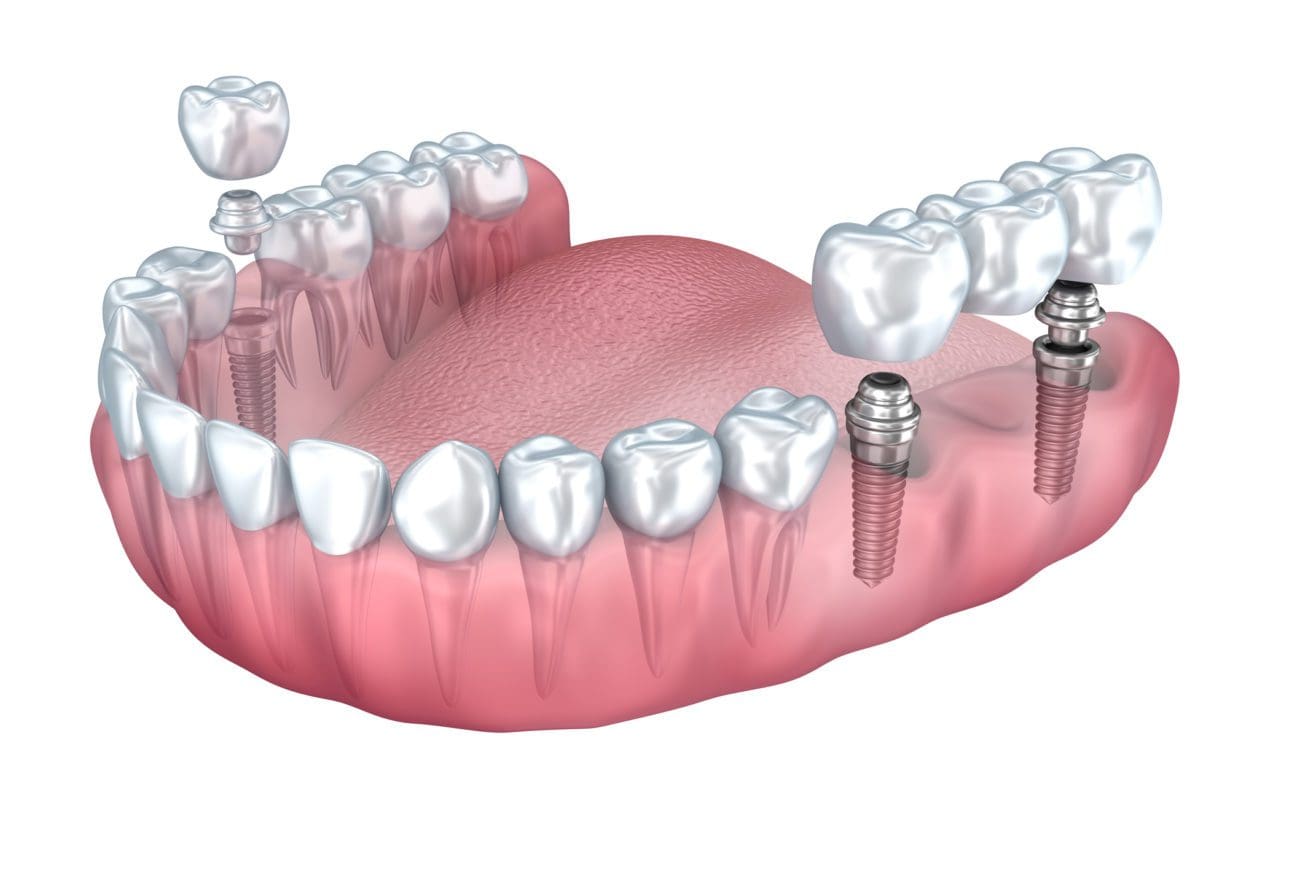The 5-Second Trick For Dental Sense
The 5-Second Trick For Dental Sense
Blog Article
What Does Dental Sense Do?
Table of ContentsA Biased View of Dental SenseGetting The Dental Sense To WorkDental Sense Fundamentals ExplainedThe Ultimate Guide To Dental Sense
are clinical gadgets operatively implanted right into the jaw to bring back a person's capacity to eat or their appearance. They give assistance for synthetic (fake) teeth, such as crowns, bridges, or dentures. When a tooth is shed because of injury or illness, a person can experience issues such as rapid bone loss, malfunctioning speech, or modifications to chewing patterns that cause discomfort.Oral implant systems contain an oral implant body and dental implant joint and might additionally include an abutment fixation screw. Dental veneers cost. The dental implant body is surgically placed in the jawbone in location of the tooth's origin. The dental implant abutment is typically connected to the implant body by the joint fixation screw and prolongs with gums into the mouth to support the affixed synthetic teeth
(https://issuu.com/dentalsense1)Structure of The Oral Implant System selecting oral implants, talk to your dental company regarding the possible benefits and threats, and whether you are a prospect for the treatment. Things to consider: Your overall health is an important variable in identifying whether you are a good candidate for oral implants, for how long it will certainly require to heal, and how much time the implant may remain in area.
Smoking cigarettes may impact the recovery process and lower the long-lasting success of the implant. The healing procedure for the dental implant body might take a number of months or longer, during which time you normally have a short-term abutment in place of the tooth. the oral implant treatment: Thoroughly adhere to the dental health guidelines offered to you by your dental supplier.
The Dental Sense Statements
Implant failure can lead to the requirement for one more surgery to take care of or replace the dental implant system. Restores the capacity to chew Restores cosmetic look Assists keep the jawbone from reducing as a result of bone loss Preserves the health and wellness of the surrounding bone and gums Helps keep adjacent (close-by) teeth steady Enhances top quality of life Damages to bordering all-natural teeth throughout implant placement Injury to the surrounding tissues during surgical procedure, such as sinus perforation Injury during surgery (as an example, crack of surrounding jawbone) Inadequate feature, such as seeming like the teeth do not bite together typically A sensation that the tooth is loosened or twisting in location resulting from a joint screw loosening up Implant body failure (looseness of the dental implant body) as a result of systemic infection, which may be a lot more likely in clients with uncontrolled diabetes because of neighborhood infection in bone and gum tissues supporting the dental implant body because of delayed recovery, which might be most likely in clients who smoke Problem cleaning the gums around the implant, causing poor oral health Unattended periodontal condition Post-surgical feeling numb as a result of nerve impingement or damage Constantly notify healthcare companies and imaging technicians that you have oral implants prior to any kind of magnetic resonance imaging (MRI) or x-ray treatments.
FDA is not knowledgeable about any adverse events reported for MRI or x-ray procedures with oral implants. Dental implants systems are typically made of materials that adhere to international agreement standards of the International Organization for Standardization (ISO) or ASTM International. These standards have information of what makes a safe product.

An oral implant is a framework that changes a missing tooth. With screw-like devices, the cosmetic surgeon inserts a dental implant into the jawbone, and important link it functions as an anchor for a man-made tooth, called a crown. A gadget called a joint links the fabricated tooth to the oral implant. The crown is customized to fit the person's mouth and match the shade of their teeth.
The smart Trick of Dental Sense That Nobody is Discussing
Some people are not eligible for oral implant surgery. It is for dental surgeons to operate people with: acute illnessuncontrollable metabolic diseasebone or soft cells disease or infectionIf these problems are fixed, an individual can have the surgical procedure. In, oral doctors abstain from operating people with: If individuals with any one of the above undergo dental implant surgery, there is a higher danger of the dental implant falling short.

Dental implant surgical procedure is a personalized procedure. Offer you time to heal. Affix the post and final crown, bridge or denture.
Next, your cosmetic surgeon will carefully place the dental implant into your jaw. Your cosmetic surgeon will reposition your periodontals and shut the laceration with stitches. If your dental implant is near the front of your mouth, your dental practitioner will make a short-term tooth for you to put on till you heal. This way, you won't have a space in your smile while you recoup.
Rumored Buzz on Dental Sense
Throughout the recovery phase, your jawbone needs to fuse to the dental implant. This procedure can take anywhere from 3 to nine months.
Once your dental implant heals, your dentist can attach the joint (little port post) and your last restoration (crown, bridge or denture). This typically takes about one hour to complete and may call for a 2nd minor surgery. You should not really feel any kind of pain during your oral implant procedure because your provider will utilize medication to numb your periodontals.
Report this page